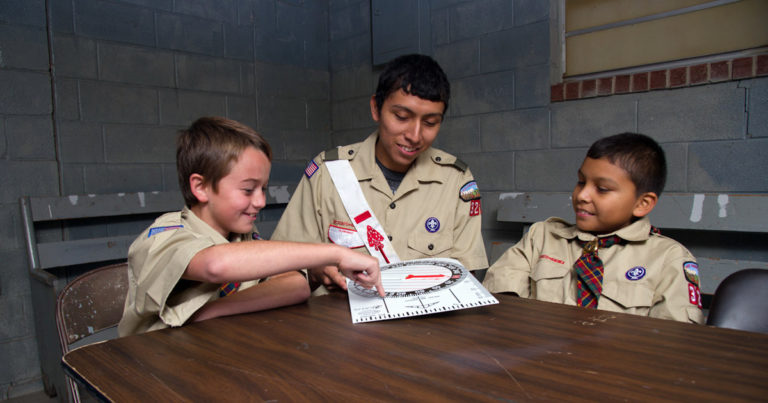The Teaching EDGE: The best way to teach someone a new skill

First, you Explain how it’s done.
“I’m going to roast this marshmallow over the fire until it’s golden brown. Then I’m going to sandwich it between two graham crackers and a piece of chocolate.”
Then, you Demonstrate the steps you just explained.
Narrate your actions to reinforce the first step.
Next, you Guide the learners as they practice.
Give the Scouts their own materials and let them try. Offer help when needed, and let the learner repeat until they’ve got it down.
Finally, you Enable them to succeed.
This is when you step back, sit down and watch. (Eating the demonstration materials is highly recommended.)
When teaching someone a new skill — be it splinting a broken arm or something equally important like making s’mores — the Teaching EDGE method is the best method.
The Teaching EDGE in Boy Scouting
In Cub Scouting, adults use the Teaching EDGE to help Cub Scouts learn something new.
By Boy Scouting, you should find opportunities for the Scouts to become the teachers. In fact, it’s required.
To earn Tenderfoot, a Scout must “Describe the steps in Scouting’s Teaching EDGE method. Use the Teaching EDGE method to teach another person how to tie the square knot.”
To earn Life, a Star Scout must “Use the Teaching EDGE method to teach another Scout (preferably younger than you) the skills from ONE of the following choices, so that he is prepared to pass those requirements to his Scoutmaster’s satisfaction.”
The Teaching EDGE is so important that it even appears in the Boy Scout Handbook (page 38 of the 13th/newest edition):
The first step is explain. The teacher carefully explains the skill, showing all the steps and keeping in mind that the learner is probably seeing this for the first time. Go slowly, make your actions deliberate, and use descriptive language, but don’t stop to show the intricacies in detail yet.
After explaining the skill, you will demonstrate it. Break down each element, showing the step-by-step process and explaining the details of how each step is done and why. Here is where you allow the learner to ask questions, but not yet where he takes the reins for himself.
Now, guide the learner as he makes his first few attempts at the skill. Be sure to let him be completely hands-on, and don’t worry if he makes mistakes. Just tell him how to fix it, or start again from the beginning. Keep at it, and be careful not to lose patience. Remember how you were when you were learning!
Lastly, the teacher enables the learner by allowing him to see that he can do it himself — and has! The Teaching EDGE method can be applied to teaching and learning any skill.
Teaching EDGE in action
Matt Nichols understands that Scouters can use the Teaching EDGE method anywhere at any time.
For my story in the May-June 2017 edition of Scouting magazine, I wrote how Nichols even used the EDGE method before the trip officially began.
Nichols can turn anything into a teachable moment — even something simple like unloading canoes from a trailer.
Before placing a finger on the canoe’s scuffed aluminum sides, he tells the Scouts how he’ll lift, flip and carry the 70-pound boat to the water. Then he and Wheless take opposite sides and demonstrate.
With his boat in the water, Nichols doesn’t touch another canoe. His role has shifted to coach as he watches Scouts Michael Cully, 14; Jack Nichols, 13; and Ryan Wheless, 12, give it a try.
Hear more of the story
For more, listen to the May 2017 episode of ScoutCast, the monthly podcast for Scout leaders. Take ScoutCast everywhere you go by downloading the latest episodes in your favorite podcasting app. Just search “ScoutCast.” Please go listen.
The Teaching EDGE: The best way to teach someone a new skill
